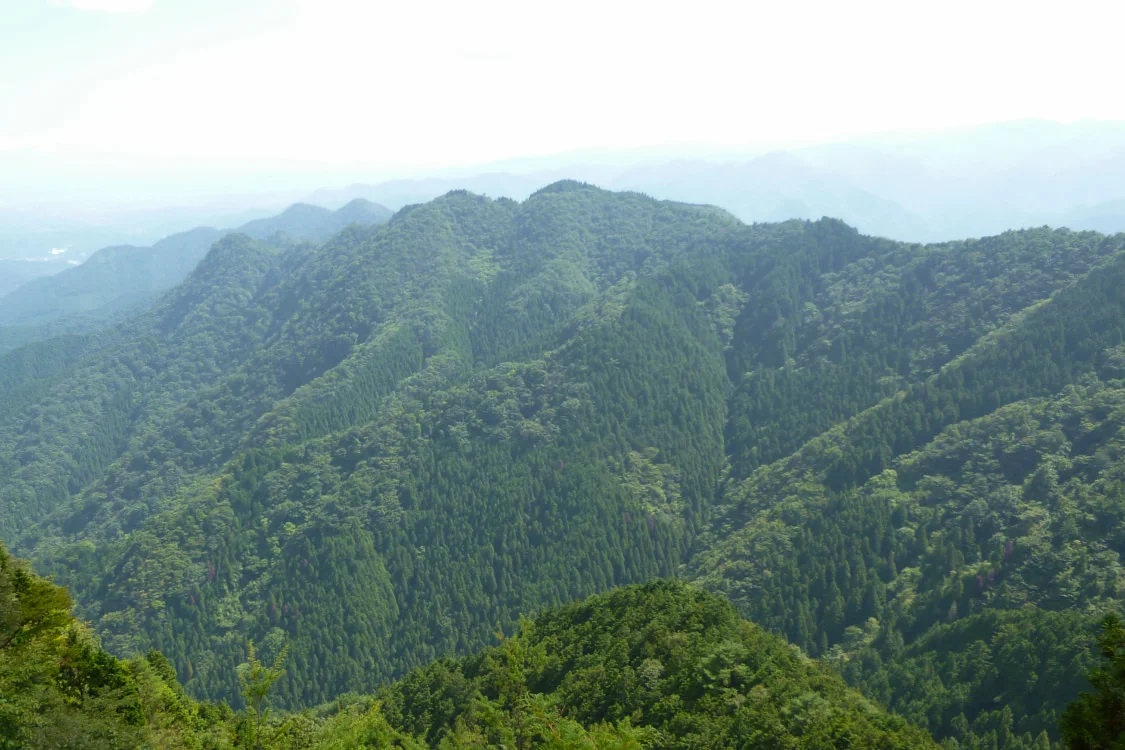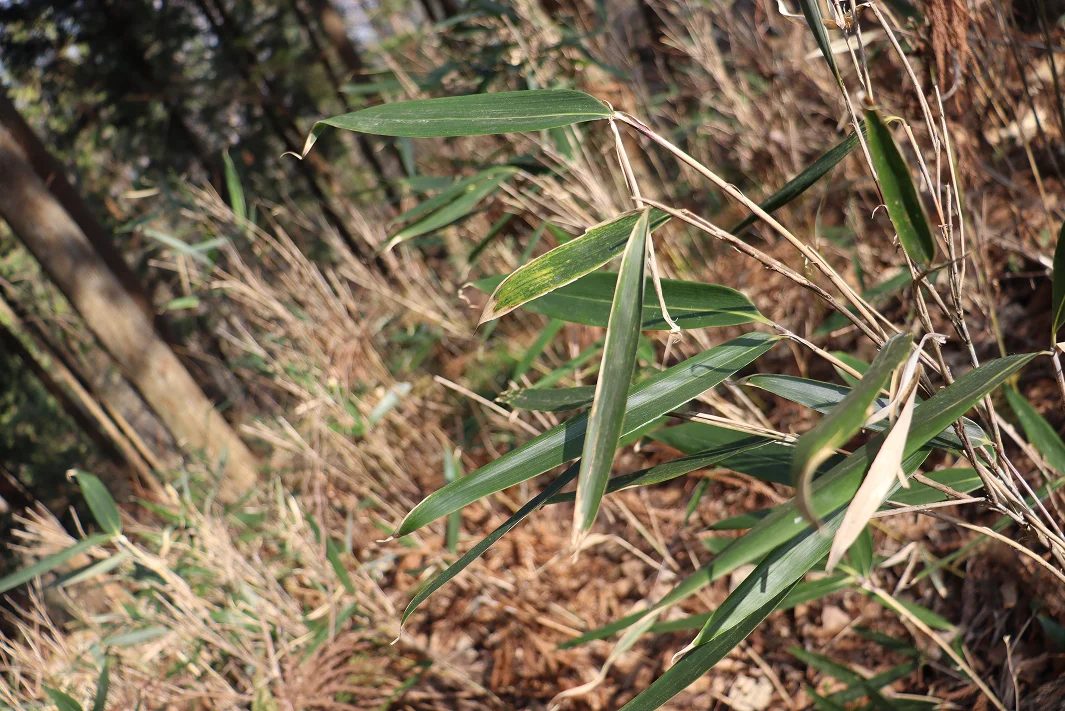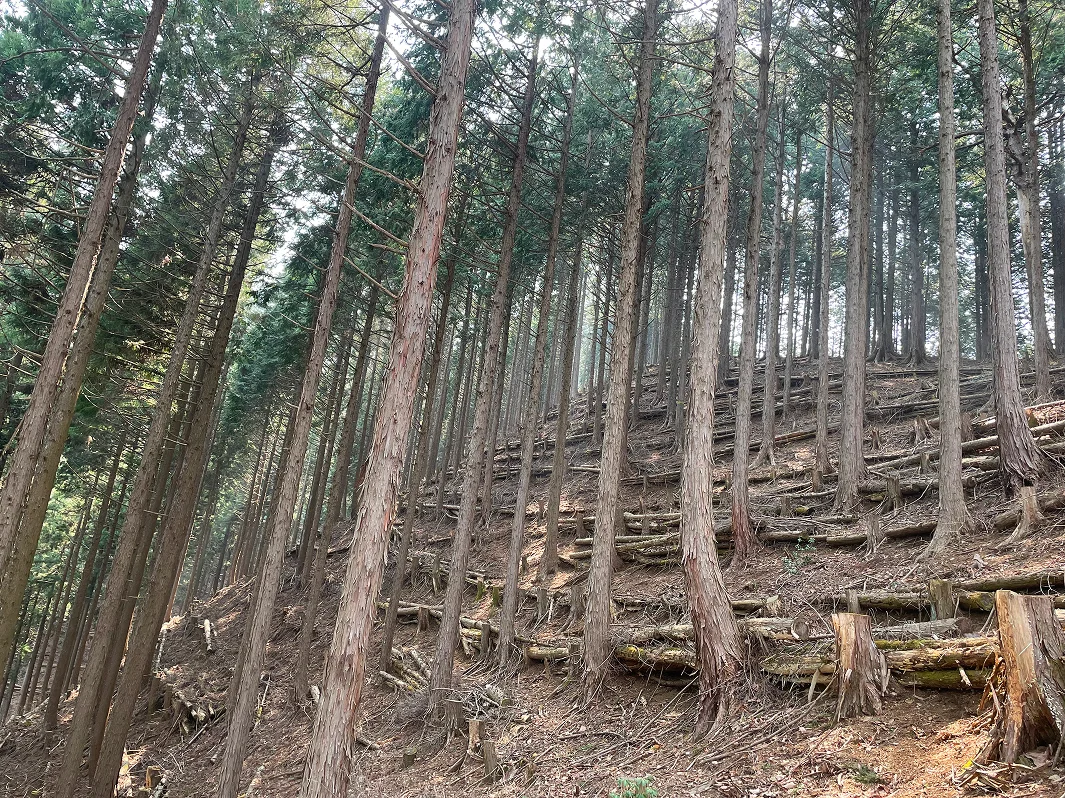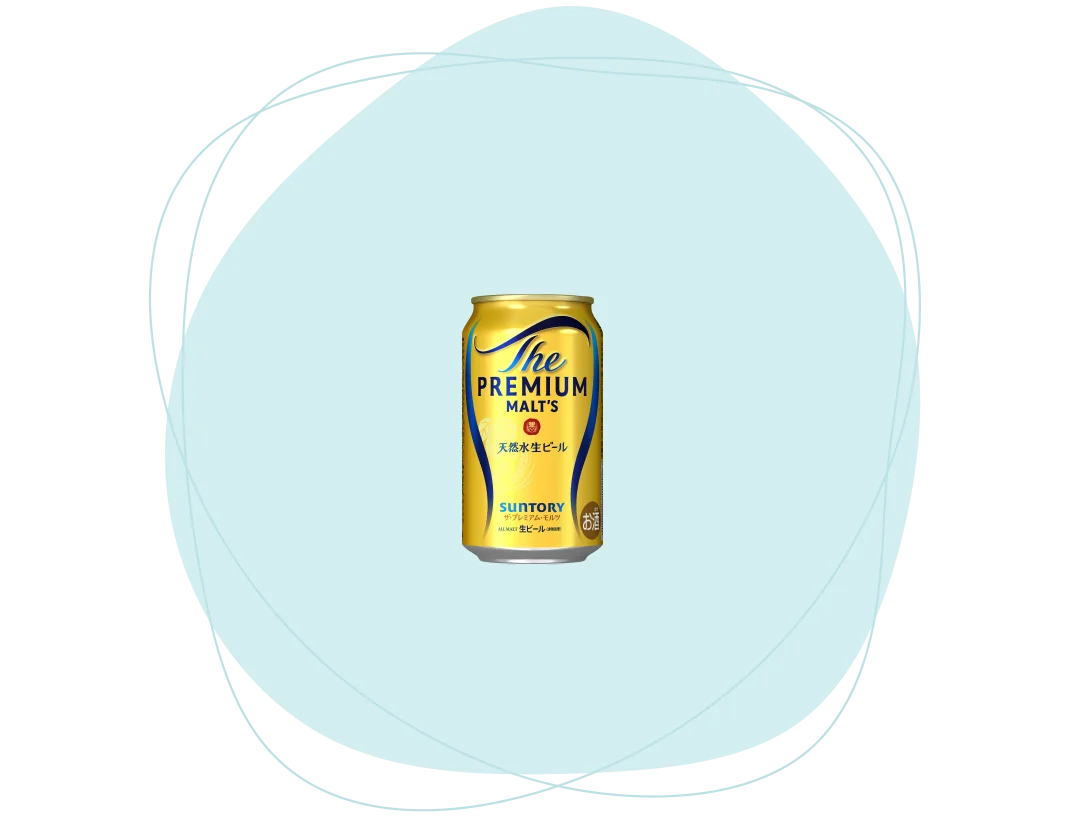Natural Water Sanctuary Okutama

This Sanctuary has been established in the water-source conservation area shared by the Suntory Spirits Ltd. Tokyo Musashino Brewery and the Suntory Products Ltd. Tamagawa Plant.
This page explains the initiatives of our Natural Water Sanctuary Okutama.
- Agreement start date
- April 2010
- Area
- About 54 ha
- Applicable plant
-
Tokyo Musashino Brewery, Suntory Spirits Ltd.
Tamagawa Plant, Suntory Products Ltd.
Deer Foraging Pressure Control
Before the COVID-19 pandemic, this forest had only a moderate number of deer. Along the forest edge by a stream, three types of hydrangeas would bloom in succession, delighting hikers as they walked by. Nettle-leaved hydrangea blooms in June, followed by the mountain hydrangea in July, and involucrata hydrangea in August. This beautiful progression can be seen in the following video (Japanese only)
Flower Encounters 2: Three Months of Hydrangeas (Japanese Only)
However, during the pandemic, when people were not permitted to enter the forest for an extended period, hungry herds of deer came in from surrounding areas and quickly devoured all three species of hydrangea.
Hydrangeas were not the only things that were eaten. A species of bamboo grass also suffered extensive damage. It is particularly vulnerable to deer and can die after just a few instances of browsing. In response, we hurried to fence off the hydrangea areas along the stream, slopes where the bamboo grass had miraculously survived, and other plots where plants preferred by deer were growing.
Fortunately, the hydrangeas and bamboo grass within the fenced areas have started to recover.

Planted Forest Thinning and Soil Retention Measures
This Sanctuary is located upstream of the Otaki waterfall, but no viable route has been found to extend a vehicle-accessible logging road into this area. In other words, it is a forest where even fully-grown cedar and cypress trees cannot be removed for timber.
Nonetheless, this sizeable area was once planted with Japanese cedar, cypress, and larch.
Why were so many conifers planted in a location where, even when they matured to timber size, they could not be removed? In fact, forests like this exist all across Japan.
Though the trees cannot be harvested for lumber, when left unmanaged, the space between trees becomes overcrowded, the forest floor darkens, and not a single blade of grass can grow. This leads to severe soil erosion, and in the worst cases, the entire slope can collapse.
That is why we conduct thinning operations every few years, laying the harvested trees along slope contour lines to serve as soil-retaining barriers. Though it feels like a waste to use such good-quality wood this way, a bit of extravagance is necessary to keep the forest healthy. What is more, in several decades, these trees will be broken down by fungi and enrich the soil as they decompose. They protect the soil when harvested, and eventually return to it.

Products Related to Natural Water Sanctuary Okutama
The high-quality groundwater nurtured by our Natural Water Sanctuaries, such as Natural Water Sanctuary Okutama, is used in Suntory beer products, including The Premium Malt’s. We provide products that prioritize both exceptional taste and uncompromising safety, harnessing the gifts of nature in their original form.

Sanctuary Details
- Location
- Odake, Hinohara Village, Nishitama District, Tokyo
- Area
- About 54 ha
- Agreement date
- April 2010
- Agreement period
- 30 years
A forest stewardship agreement was signed under the Forest of Symbiosis and Collaboration initiative promoted by Akiruno City, Tokyo.
See the list of Natural Water Sanctuaries across Japan
 Home
Home Initiative Policy and Structure
Initiative Policy and Structure Living Things in the Natural Water Sanctuaries
Living Things in the Natural Water Sanctuaries Dedication to Water
Dedication to Water Natural Water Sanctuaries
Natural Water Sanctuaries  Natural Water
Natural Water  Initiative History
Initiative History